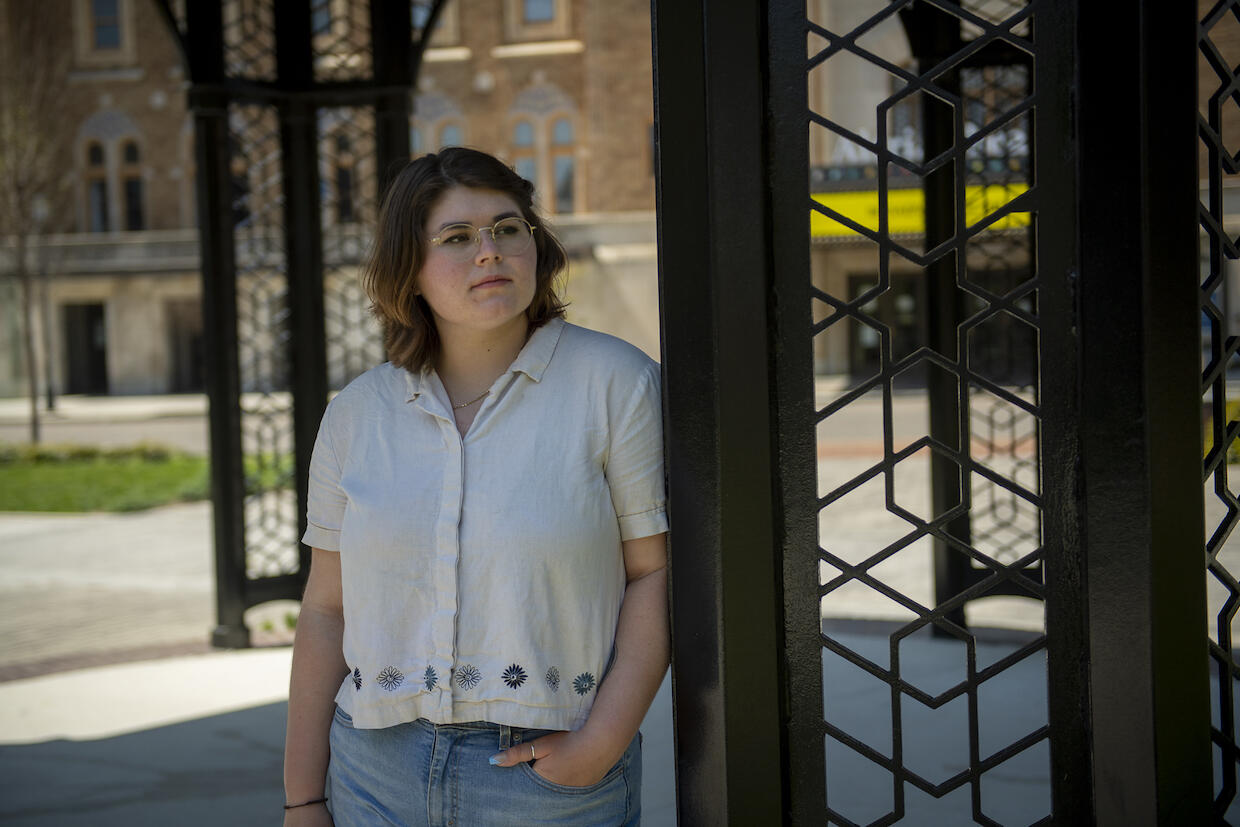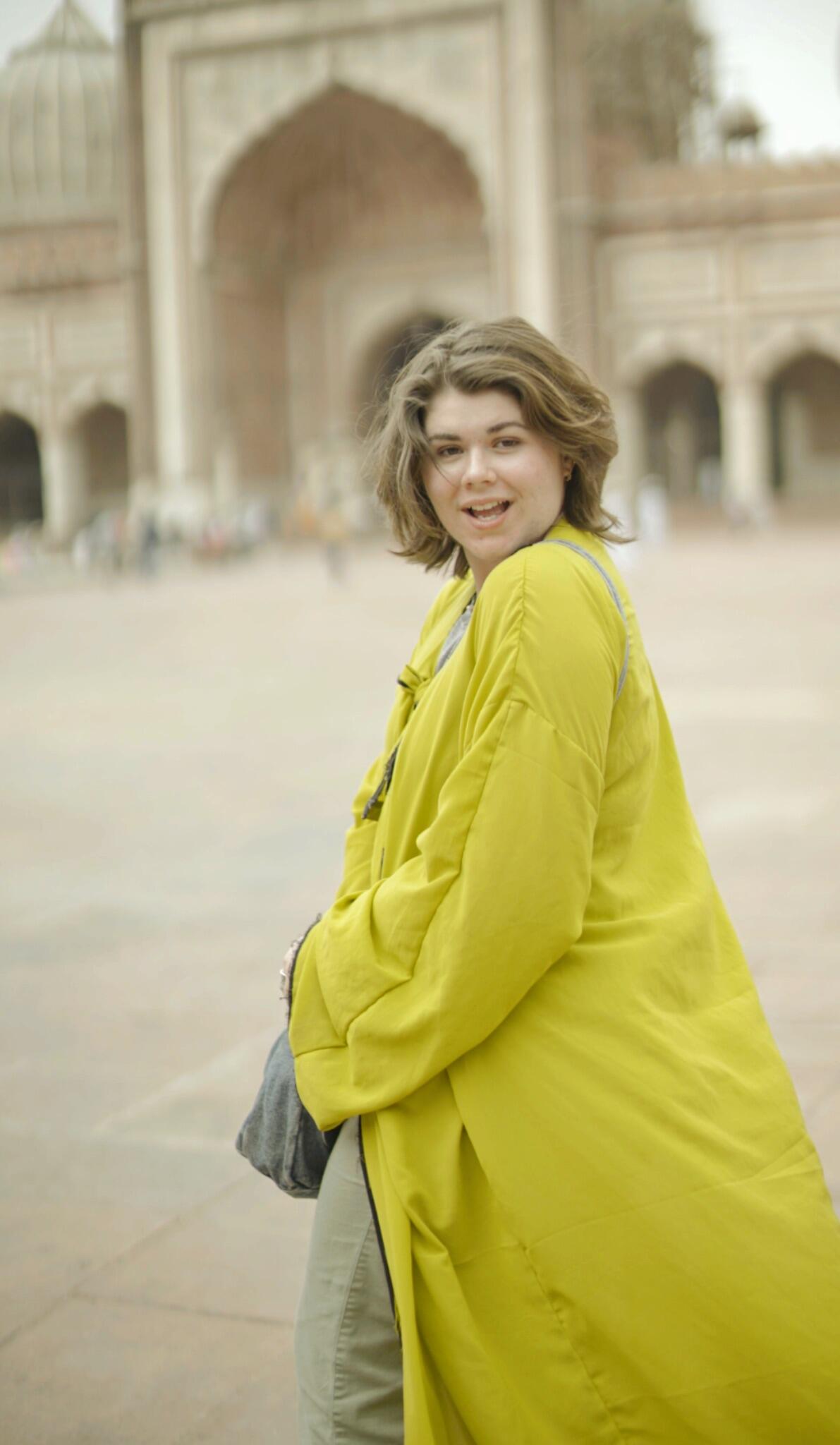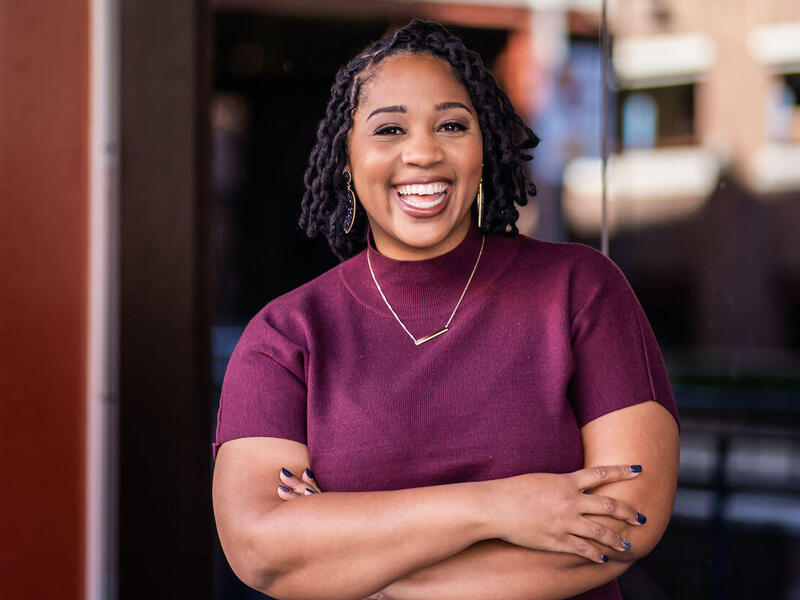
April 13, 2021
Class of 2021: Hannah Sahr is interested in the user experience of space
Share this story
As an interior design major, Hannah Sahr has mastered skills far beyond how to create a space. She’s used her time at Virginia Commonwealth University to delve into cultural identities to analyze and translate how places are constructed and organized as well as the meaning they convey.
Sahr is interested in the user experience of space. What happens when you go into a place? How are you oriented? What's the vibe? What's supported for people programmatically and emotionally? And what identities are supported and recognized?
“What I'm really interested in is a little bit more philosophical and related to social issues,” said Sahr, who will graduate in May with a bachelor’s in interior design and a minor in art history from the School of the Arts and a minor in urban and regional studies from the L. Douglas Wilder School of Government and Public Affairs. “I'm very focused on research and how design and our interiors support an identity and a minority group, and how you provide accessibility. Interior designers are really about the safety, support and well-being of the public.”
Although the Currituck, North Carolina, native was always sure about studying art, it was at VCU that she settled on interior design, which takes an architectural and structural approach to designing public spaces.
“I grew up in a small town and I really value intimate community,” Sahr said. “I think that's something that I've taken with me even into university and throughout my design practices [by] asking, ‘How do you start at the community level?’”
Jobs in tourism, in particular as a docent at Whalehead, a 1920s art nouveau-style home that is now a museum, made her an astute observer of human nature.
“I would watch how people experienced the space and ask, what were moments that people were detouring from it, or were going against the rules that were set for them? Why would people go left instead of right at this one specific spot? I would take mental notes.”
<slideshow id=204 align=middle width=620>
Sahr’s favorite class at VCU has been the Middle of Broad (MoB) studio, a hands-on, experimental design lab where a cross section of students collectively take on community service-learning projects that intersect with the environment and public spaces. Through critiques and iterations during the semester, Sahr and her classmates parsed out how people experience the spaces the students were exploring, which places are public and private, and what places support education or facilitate basic needs.
For one project, students were challenged to design a neighborhood clinic. Sahr enjoys the out-of-the-box conceptual assignments posed to students at MoB, such as the project, “James River: a living timeline,” where students looked at the river “as a narrator and a truth teller of the exploitation of its resources, the people and the interventions that have gone on through time.” Using their design, research and even poetry writing skills, Sahr and her teammates created a timeline that would be read transversely rather than in the traditional linear fashion to explain events on, and effects to, the James River.
“[Middle of Broad] studio has been super helpful for me formatively because it's so independent,” Sahr said. “It really makes you get into a position of making decisions in a real-world context. But it also helps you realize that your decisions don't always have to be so formal, and they're not always the common decision. Sometimes we'll come up with ideas that people aren't expecting, but they want to see them through and they kind of come off a little weird.”
Sahr’s most memorable experience at VCU was receiving a Dean's International Research Grant in 2019 to do an architectural analysis of major cities of India. She centered her analysis and research around Chennai with travel to other parts of the country.
“It was the first time that I was able really to dig into my research of the urban fabric, how architecture supports an identity and how our interiors play a part in that,” Sahr said. “I really loved that experience because I was able to look at how older buildings and culture related. … I was able to do some analysis on what was being suppressed and what was being elevated.”

Last summer, when most people were hunkering down at home because of the COVID-19 pandemic, Sahr went cross-country for an internship in Albuquerque, New Mexico, at Dyron Murphy Architects, which designs for Native American reservations and tribes throughout the Southwest.
“I was really drawn to that firm because it was another layer of [the question], how do you design for such a specific culture?” Sahr said. “I worked on health care facilities, public housing and justice centers. I struggled when I would be asked to give a modern design for a Hopi reservation, for example, and I would question ... why wouldn't I just design for the identity, and for the people, that is a lasting design?”
Sahr will return to that firm to work after graduation to continue exploring how good design is achieved through the support of an identity, not a trend.
Here in Richmond, she interns at the SMBW interdisciplinary design studio (where Sahr said cultural identity plays a big part in their projects) and works at the VCU School of the Arts computer lab.
“I love working in the computer lab because I get to help students — instructing with the laser cutter and the computers and giving workshops on how to use tools to see a project through … and see their projects,” she said.
Sahr has also explored social justice concerns, using her senior thesis, "Richmond Allies: An Exploration of Food Deserts and Serving Richmond's East End," to address food scarcity through design and map making. For the thesis, she used her design skills to visually show where markets were lacking and to illustrate the lack of resources, such as public transportation, for geographic areas.
“In my research, I wanted to create a neighborhood market in Jackson Ward that not only facilitated the needs of the neighborhood, but thinks demographically, like who's living there? What do people typically shop for? What are people looking for in their regular grocery trip?” Sahr said.
“One of the nice things about being a designer is you have this great toolbox. I do map making and I'm able to visually communicate my research and the importance of it.”
Subscribe to VCU News
Subscribe to VCU News at newsletter.vcu.edu and receive a selection of stories, videos, photos, news clips and event listings in your inbox.








